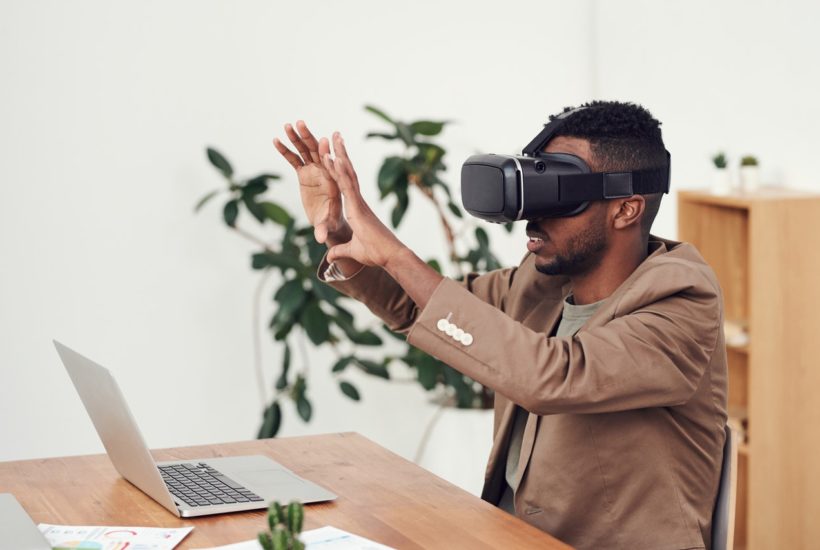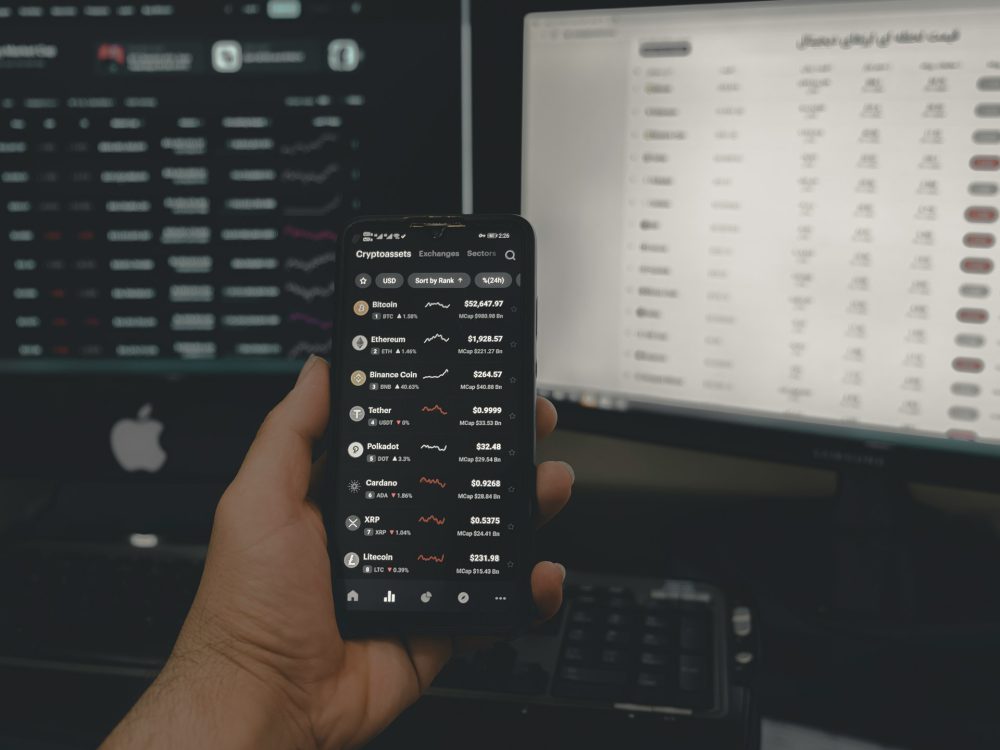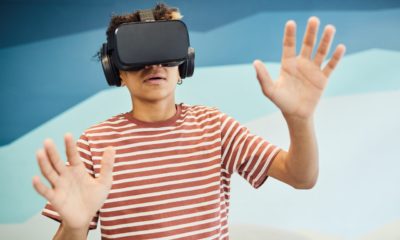Business
Beyond Titillation and Beating Sabers: VR Is Finally Growing Up
There’s no denying Virtual Reality’s (VR) popularity in gaming and “adult” entertainment; its supreme immersive qualities have been overstimulating idle minds for years. What is less well known, however, is that VR is good for a number of unexpected, incredibly useful, applications. The only thing holding it back is the prohibitive cost of developing in VR, which, until now, has limited progress.

When someone mentions Virtual Reality (VR), what’s the first thing you think of? Gaming? Porn? If so, you are not alone. And with good reason, too. Without these two technological movers and shakers (and yes, apparently porn does influence tech), VR might not have progressed anywhere near as rapidly as it has. Who else would there be to drive hardware sales if it weren’t for sweaty young men looking to live out their alternate reality fantasies?
Whatever the answer may be, an increasing number of people are now using VR for more than just titillation and beating sabers. With its power to mess with our senses and immerse us into just about anything, it didn’t take long for a few industrious inventors to find new (and arguably more productive) ways to use it.
Now VR is finding uses in many professional fields where it is gaining a lot of traction as a training aid. In particular, professions where creating realistic training scenarios are difficult, expensive, or dangerous are gaining the most benefits. Think surgeons, emergency services workers, pilots, etc. It’s also getting a lot of attention from firms with much simpler training requirements coupled with high employee numbers and turnover. Here VR provides a cost-effective solution where the initial investment is quickly recuperated thanks to dramatically decreased training costs.
Once we start delving into other uses for virtual reality, things start to get a little more interesting, especially when using it to treat various conditions. Some of these uses are pretty obvious and take full advantage of VR’s ability to immerse its users to the fullest. Others—and this is where things get more interesting—are somewhat unintuitive.
An Intuitive Use For VR: Exposure Therapy
One of the more intuitive uses for VR is Virtual Reality Exposure Therapy (VRET), where therapists apply the technology to the well-known field of exposure therapy. VR’s ability to fully immerse its user in any situation imaginable is already proving itself to be a viable alternative to real-life exposure, which is fortunate given some of the avenues this is opening up.
Take, for example, the case of PTSD as a result of warzone trauma. Effective exposure therapy requires that the patient be exposed to realistic stimuli similar to what inflicted the initial trauma. While this isn’t a huge problem for overcoming a fear of spiders, recreating traumatic events from a warzone—if even possible—would be expensive at best, and dangerous at worst. However, improvements in VR technology now open up the possibility of doing just that, without the expense or danger of doing it for real.
It is also proving to be highly effective. A multi-year study by Cardiff University and Cardiff and Vale University Health Board (CVUHB) found that VRET delivered significant improvements for two-thirds of its participants. This is already comparable to the success rates from traditional exposure therapy, which sit anywhere between 60-90%.
The success of this study came at a time when VR was still in its mainstream infancy. With improvements in the technology and the investigation of other therapy techniques, success rates may match the best real-life exposure therapy success rates, even in complex cases like treating warzone trauma.
The Unintuitive: Treating Motion Sickness With VR
If virtual reality is known for one thing other than being a powerful immersive technology, then it’s for its ability to induce motion sickness in its users. In fact, the disorienting effects are so common that the term cybersickness was coined just to describe the phenomenon.
New terms aside, the effect is not all that dissimilar to other forms of motion sickness. That is, it is believed to be induced when the movement of the body doesn’t correlate with what the eyes see.
Given this, it is surprising that people are now using virtual reality to treat what it is notorious for—motion sickness.
For now, it does remain a niche application of VR. The pioneering device in this space, the See-LEVEL, was released only recently and is targeted mainly at commercial operators of sea-going vessels. The principles also apply to many forms of motion sickness, so it’s only a matter of time until we could be seeing a VR headset in the back seat of the family car for this very purpose.
Virtual Reality: The Hard And The Soft Of The Problem
As use cases for virtual reality continue to expand, a rabid focus on hardware development has continued to drop the prices of VR headsets while also delivering incremental upgrades. This has benefited most use cases for virtual reality technology as most only require a standard VR headset.
The situation changes a little on the software side. While a lot of what’s needed to implement VR in software is shared across all applications and platforms—tracking motion and positioning assets in 3D space, for example—development in this area hasn’t received anywhere near the attention it deserves.
Fortunately, some companies are now turning their attention towards tackling this problem, intending to commoditize VR software development in the same way that hardware is. This is seeing companies like XRApplied already positioning themselves as leaders in a diversity of fields through Software Development Kits (SDKs) which act as building blocks for applications ranging from VRET through to employee training.
Now, what used to require a lot of reinventing the wheel is easily solved by dropping in ready-made components from XRApplied. This is making VR development affordable to the point that SMEs and underfunded researchers can now dabble with custom VR apps, opening up a world where VR can finally advance into a more mature stage.
—
(Featured image by Fauxels via Pexels)
DISCLAIMER: This article was written by a third-party contributor and does not reflect the opinion of Born2Invest, its management, staff or its associates. Please review our disclaimer for more information.
This article may include forward-looking statements. These forward-looking statements generally are identified by the words “believe,” “project,” “estimate,” “become,” “plan,” “will,” and similar expressions. These forward-looking statements involve known and unknown risks as well as uncertainties, including those discussed in the following cautionary statements and elsewhere in this article and on this site. Although the Company may believe that its expectations are based on reasonable assumptions, the actual results that the Company may achieve may differ materially from any forward-looking statements, which reflect the opinions of the management of the Company only as of the date hereof. Additionally, please make sure to read these important disclosures.

-

 Crypto2 days ago
Crypto2 days agoBitcoin Surges Toward $110K Amid Trade News and Solana ETF Boost
-

 Fintech1 week ago
Fintech1 week agoMuzinich and Nao Partner to Open Private Credit Fund to Retail Investors
-

 Crypto5 days ago
Crypto5 days agoBitcoin Traders on DEXs Brace for Downturn Despite Price Rally
-

 Business2 weeks ago
Business2 weeks agoDebt-Fueled Markets, Zombie Corporations, and the Coming Reckoning
























